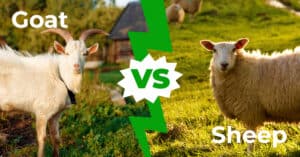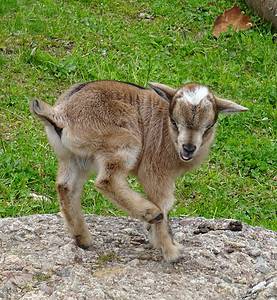If you don’t like to talk about feces, you’re not alone. Poop can be disgusting, mainly because it has a pungent smell and is one of the many ways diseases spread. However, excrement is a necessary evil as it has advantages, especially for livestock farmers. For instance, goat poop can give the goat-owner an idea of how healthy the goat is.
Goat farmers can quickly tell if something’s not right by examining the goat’s poop’s texture, color, and shape. It helps them nip a health crisis in the bud as early as possible.
In this article, we’ll discuss everything you need to know about goat poop.
What Does Goat Poop Look Like?
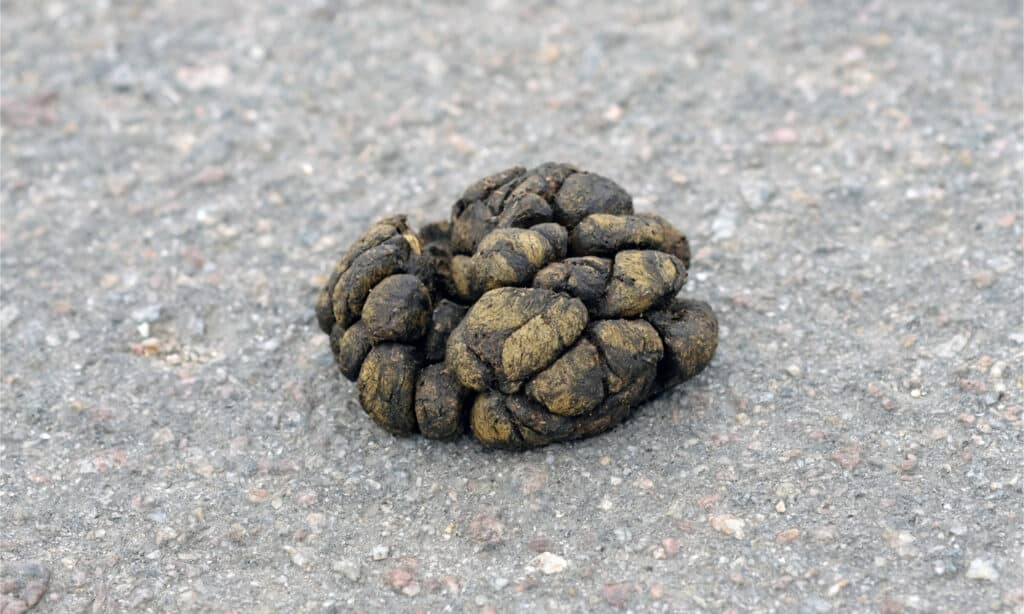
A healthy goat poop has the shape of small oval balls.
©Anakumka/Shutterstock.com
When a goat (Capra aegagrus hircus) is healthy, its poop typically comes out as hard, evenly distributed dark brown pellets, like the shape of small oval balls. However, when one examines them from a distance, they may look dark green or black. Unlike many other animals, however, goat poops are individual drops that don’t attach. It’s worthy of note that even the slightest variations in a goat’s scat can indicate a serious health problem.
For example, if a goat’s poop isn’t distributed evenly and forms clumps, it can mean three things. The first reason for clumped pellets is that the goat has been overeating. Another reason is that there was a sudden dietary change. Lastly, clumped pellets can be one of the earliest signs of an increased parasitic load or an ailment. If the pellets don’t return to normal after a few days, a visit to the vet becomes necessary.
Goat poop can also look like a dog’s scat sometimes. When this happens, we call it a “dog log,” and it can indicate dietary changes or infection. Meanwhile, a goat with watery poop most likely has diarrhea and would require urgent medical attention. Diarrhea can be life-threatening and cause dehydration in goats.
Meanwhile, goats can also have pointy pellets instead of oval ones. This often indicates that they have increased protein amounts in their diet and doesn’t give any cause for concern.
Baby Goat Poop
“Meconium” is a unique name for a baby goat’s first poop. They come out as thick, sticky, and dark-colored droppings that become pasty and yellow as they grow older. As farmers introduce them to grain and hay, they change into brown pellets.
Like adult goats, baby goats can develop illnesses that affect their poop color, texture, and shape. For example, an E Coli infection can cause watery green or bright yellow poop. However, it may also indicate milk scours, meaning the kid has had too much milk. If they keep excreting green poop even after cutting down on their milk, call a veterinary doctor immediately.
Does Goat Poop Smell?
Generally, a healthy goat’s poop shouldn’t have any smell, and even if it does, it doesn’t get overwhelming. A smelly goat poop may indicate a severe problem, especially in kids. For instance, a baby goat can excrete dark-colored poop with a foul smell. This is usually a symptom of Enterotoxaemia that also causes pain and discomfort.
Enterotoxaemia is an acute medical condition caused by the bacteria Clostridium perfringens type D. Symptoms include diarrhea, stomach bloating, and weight loss. It’s a foodborne illness that can cause sudden death. It’s worthy of note that Enterotoxaemia can also affect humans and sheep.
What Do Goats Eat?
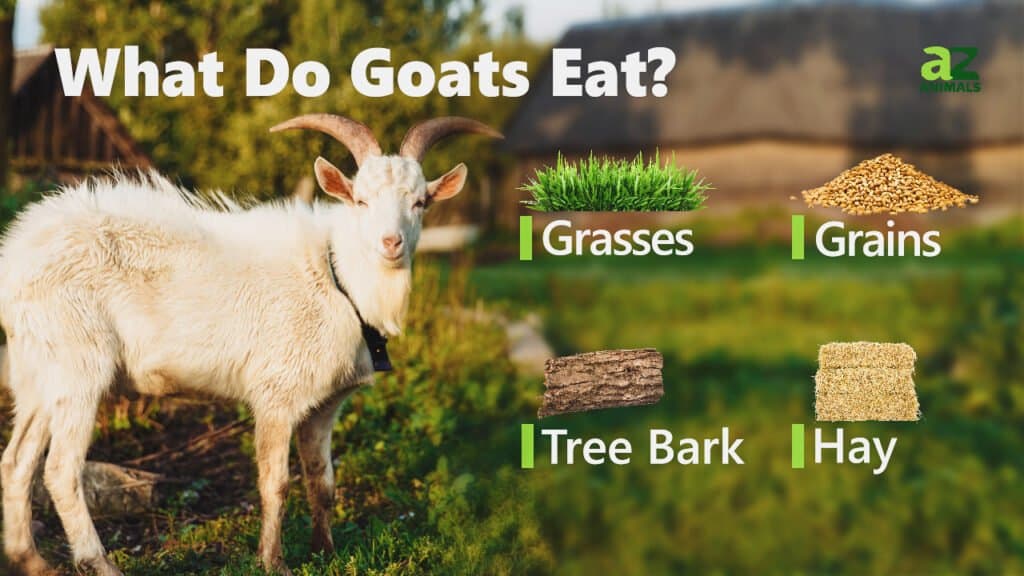
Since a goat’s diet is the primary determining factor for how their poop looks, it’s vital to understand what they eat. They are herbivorous animals, and their favorite meals include hay, grass, weeds, grain, and tree bark. Goats are browsers, so they love to feed on foliage from trees and shrubs. Their supplementary diet is significantly salt from mineral deposits. Generally, however, goats aren’t picky eaters, so one may find them feasting on anything that catches their fancy.
Goats have an almost 360-degree vision with rectangular pupils that lets them see in nearly every direction. They leverage this incredible feature excellently in finding their food. They also have a great sense of smell and deep perception and can quickly catch on to moments.
Unlike sheep and cows, goats forage on various food sources instead of sticking primarily to one. Wild goats, like mountain goats, markhor, and ibexes will typically feed on whatever they find in their environment. This includes berries, wild grain, fallen fruit, and flowers. However, avoid feeding meals like avocado, lilacs, chocolate, holly, and wild cherries to pet goats as they can harm them. Baby goats typically feed on milk.
Is Goat Poop Harmful?
The answer to this question is a big “YES.” Like every other animal, a goat’s poop can carry pathogens and viruses that cause diseases. So, be careful when coming in contact with their excrement, especially if you have an open wound. In some cases, humans can fall sick after drinking contaminated water from goat poop.
Common diseases one may contract from goat poop include leptospirosis, Q fever, cryptosporidiosis, and contagious ecthymas.
Uses of Goat Poop
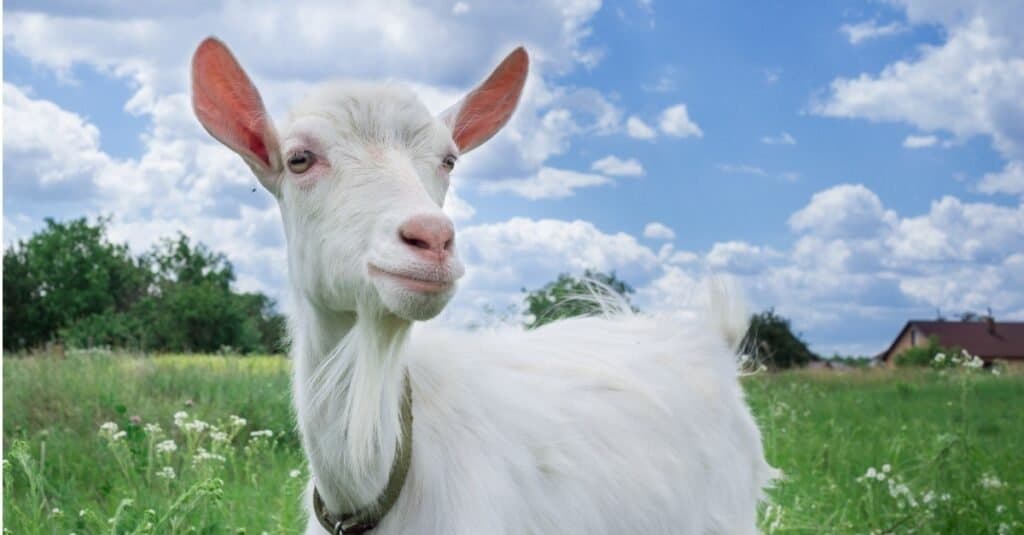
A healthy goat’s poop shouldn’t have any smell.
©iStock.com/VeraOsco
Goat poop is one of the choicest manure options for farmers. That’s because it doesn’t smell or attract insects. Goat poop also spreads easily and is rich in minerals that make plants thrive, especially potassium, nitrogen, and phosphorus. Again, many farmers have found that goat dung isn’t harsh on plants and wouldn’t burn them like fresh horse or cow poop.
Apart from manure, there are speculations that some individuals eat goat poop, using them as ingredients for certain meals in China. Many people swear by the efficacy of argan oil in promoting skin and hair health. It may surprise you to note that manufacturers source this oil from goat feces.
Here’s how this works: goats feed on argan trees and expel the undigested pits in their excreta. Argan oil manufacturers extract their produce from the poop, purify it, and package them into usable products for hair and skin.
Does Goat Poop Differ From Sheep Poop?
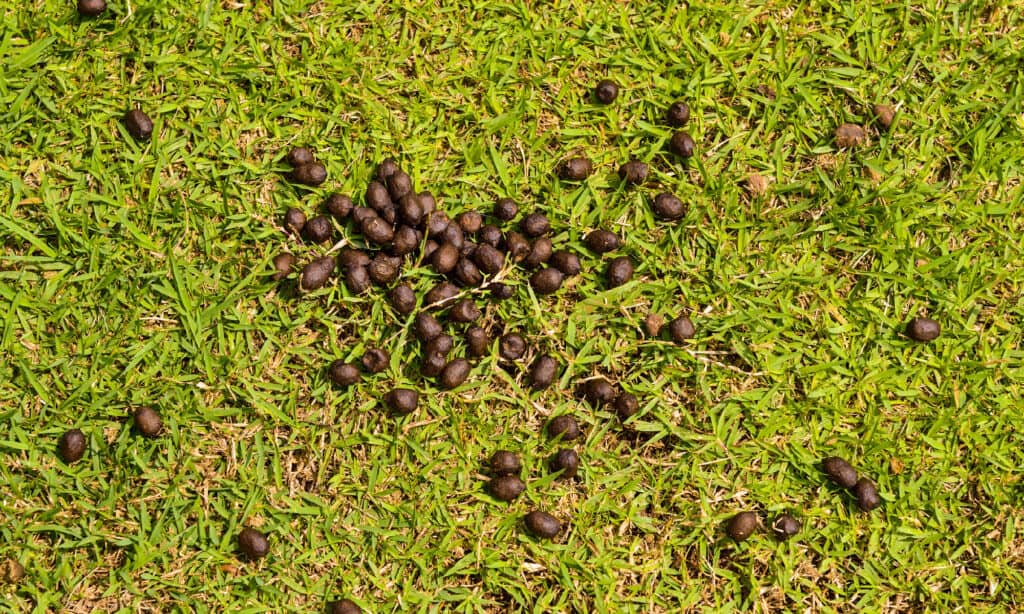
©iStock.com/Teen00000
As sheep and goats are both domestic animals that consume similar foods, you may believe that their poop is similar. The truth is, there is not much difference between the two types of poop. Sheep poop is also small, naturally brown, not mushy, and pellet-like. Both sheep and goats are ruminant animals, which means they are hoofed mammals that consume plant-based food. Their specialized stomachs ferment the food through microbial actions.
Goats, however, are browsers, so will also consume leaves, shrubs, vines, and weeds, while sheep, who are grazers, usually stick to grasses.
The photo featured at the top of this post is © iStock.com/aurorat
Thank you for reading! Have some feedback for us? Contact the AZ Animals editorial team.




